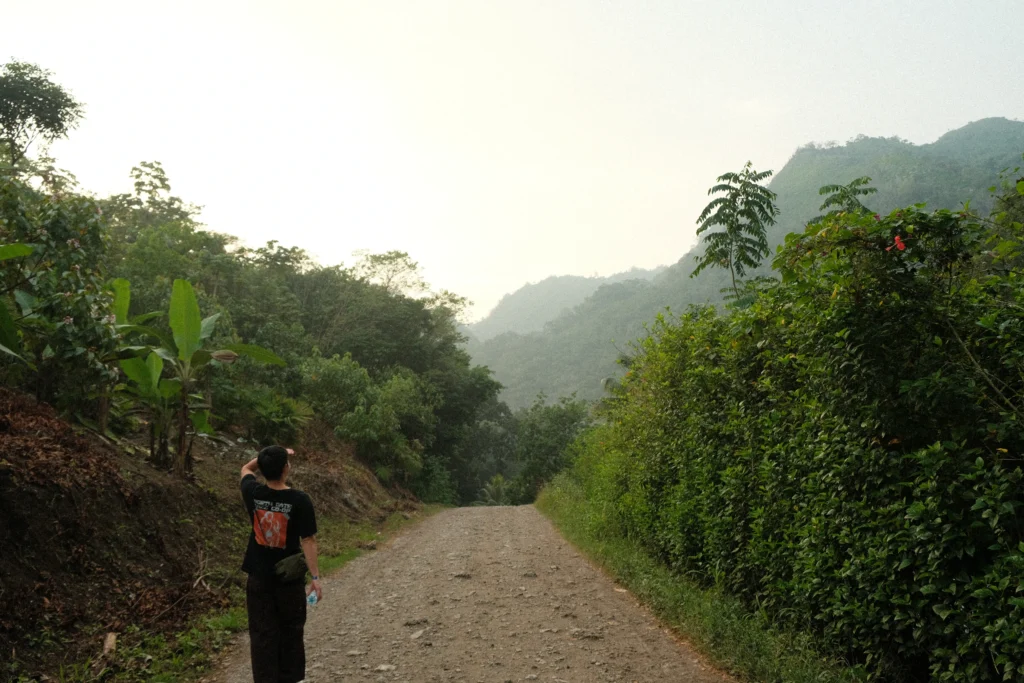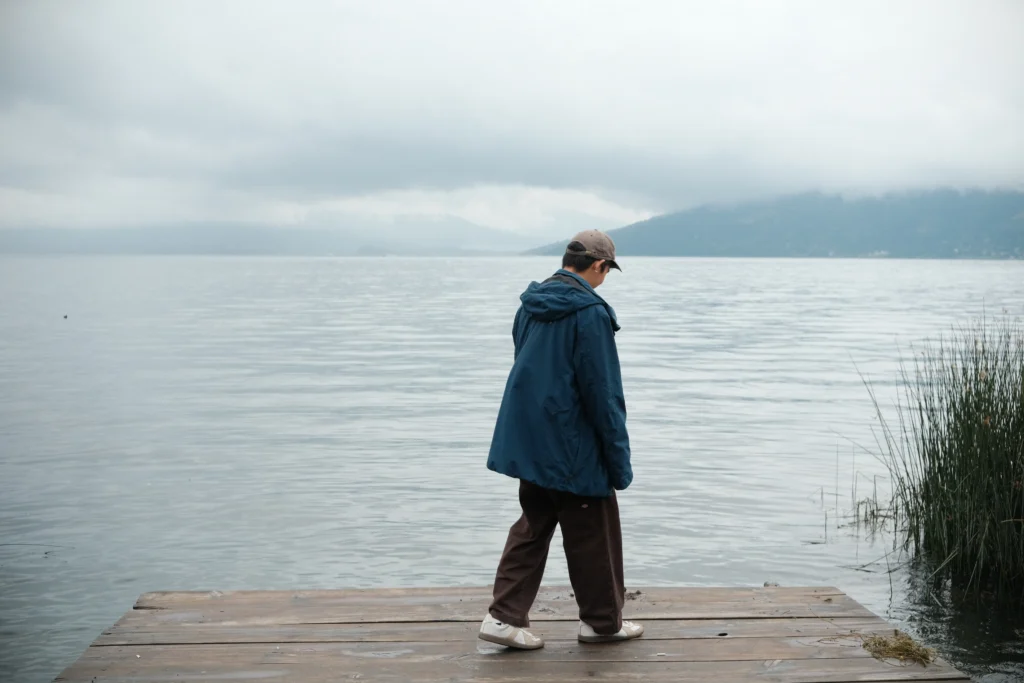Updated: 24 June 2025
Read Time: 5 minutes

If you’re reading this, chances are you’ve already decided that solo travel is worth it. The freedom, the chance to discover more about yourself, and the personal growth that comes with it are just a few of the many rewards of going away alone for the first time.
But knowing that you want to travel is often easier than figuring out the how, when and why. That’s where many people get stuck. Don’t worry! I’ve simplified my own trip-planning process into an easy 8-step checklist to help you get started with confidence.
Before we dive into the list I want to break down 4 important questions I believe everyone needs to start with. These questions are in a very specific order and I will touch on why this is important during my breakdown.
- The 4 Questions You Need to Ask Yourself 🤔
- My 8-Step Checklist 📝
- 1. Pick your destination and dates (season matters) 📍
- 2. Check passport entry requirements 🛂
- 3. Apply for a visa (if needed) 📝
- 4. Book flights + check layover visa rules ✈️
- 5. Buy travel insurance 🛡️
- 6. Book accommodation 🏨
- 7. Set up a travel card + get some cash 💳
- 8. Pre-book key activities or reservations 📅
The 4 Questions You Need to Ask Yourself 🤔
1. Why am I travelling?❓
Understanding your why is essential for shaping the trajectory of your travels. It becomes your foundation when things get tough (which is inevitable), or when you’re faced with choosing between two equally appealing options. Many people don’t truly consider their why before boarding that plane—but I believe everyone has one, whether they realise it or not.
Okay, so this might all sound a bit abstract so far, but hear me out.
For example:
On my first solo trip, I spent 10 days in Vietnam without a clear why. Towards the end of the trip, I struggled to put myself out there. I felt lonely and aimless, even though I was in a beautiful, vibrant country full of life.
Later, during a trip to Mexico, I had a much clearer purpose. My why was to experience local life in Latin America. I wanted to work, immerse myself in the culture, and build friendships across cultures. Holding on to that why helped guide my choices, especially on days when I felt burnt out, homesick, or just wanted to take it easy.
Reminding myself of my goal helped me pick the option that brought me closer to it. It eased my anxieties and gave me the push I needed to do things I’m now really glad I followed through with. I’m not saying that your why needs to be “correct” I’m more trying to gently point out that having a clear picture of your why is greatly beneficial, especially when solo travelling (things can get lonely and weird quick).
2. What’s my budget? 💸
The reason I’m putting budget over where is because unless money is not a consideration in your decision making, it is a very real factor in choosing how far you can go, and how long you can stay. It’s important to note that if you’re not from Australia (which I know a lot of my readers aren’t) the regions might change slightly depending on the flight prices you can get/travel time to the destination.
For example, here is a rough table showing the different locations and travel durations depending on your budget (in AUD).
| Budget (AUD) | Duration | General Regions from Australia | Example Countries |
| $1,000 | 1–1.5 weeks | South-East Asia, Pacific | Vietnam, Bali |
| $2,000 | 2–3 weeks | South-East Asia, South Asia | Thailand, Sri Lanka |
| $5,000 | 4–8 weeks | East Asia, Latin America, Balkans | Japan, Colombia, Albania |
| $10,000 | 2–6 months | All Asia, Latin America, Europe, East Africa | China, Mexico, France, Rwanda |
| $15,000 | 3–8 months | Light round-the-world trip (3 regions from above) | South-East Asia to East Asia to Europe |
| $20,000+ | 6–12 months OR (3–5 months luxury travel) | Round-the-world bucket list trip | South-East Asia to Eastern Europe to Africa to North America to South America |
3. How long am I travelling for? 🗓️
This question is pretty self-explanatory — your timeline is closely tied to your budget (more money usually means you can travel longer). However, your available time should also influence where you choose to go. For example, if I only have 10 days to travel, I probably wouldn’t book a 20+ hour flight across the world. Ten days just isn’t enough to make up for jet lag and the two days lost to travel. Also, if your trip is short you probably don’t have much room for spontaneity (probably less rest days where you do nothing and just rest). On the flip side, if your trip is longer (1-2 months +) you might want to consider doing some volunteering to help save cost. Doing a Workaway in Mexico was an experience I will never forget and definitely helped me budget for the rest of my trip!
4. Where am I going? 🌍
The best decision you get to make! After considering your why, budget, and duration you can now start to think about where you want to go. Maybe you already have a place in mind that has been on your bucket list. Or maybe you have a rough idea of countries you want to go to but are still open to adding more to your itinerary. Either way, I like to choose my destinations for multi-region trips with one central country in mind. This should be your non-negotiable country and you should prioritise the season and duration to mainly focus on this country. For example, I knew I wanted to go to Mexico as my number one priority. So I planned Guatemala and Costa Rica around the main Mexico trip in mind.
Congratulations! You have now asked yourself or at least thought of the 4-main questions you should ask yourself before planning your trip. But now that you have your why, your budget, your duration and your where you need to actually plan your trip 😲. Thankfully, I pulled together 8-simple steps that I use as a checklist to plan any trip.

My 8-Step Checklist 📝
1. Pick your destination and dates (season matters) 📍
This overlaps slightly with the previous point, but now that you’ve (hopefully) chosen your countries, it’s time to pinpoint the exact areas where you want to start your trip. Of course, how specific you get will depend on how spontaneous you want your trip to be. Remember, you don’t need to lock in every detail just yet. However, at a minimum, you’ll need to decide where you’ll be flying into (and out of, if you’re booking a return flight instead of a one-way ticket).
Next, when deciding when to go, keep in mind that season matters! Some destinations, especially tropical ones like Bali, Costa Rica, and Vietnam, are heavily weather-dependent.
Using Costa Rica as an example, a quick Google search will likely tell you that the best time to visit is during the dry season, from December to April. However, depending on your budget and the type of experience you’re after, a better time to visit might actually be from May to June or even late October to November. These months fall on the tail end of the wet season and are often referred to as the “green season” — thanks to the extra rainfall, the landscapes are lush, the rainforests more vibrant, and best of all, there are fewer tourists. That means you could end up saving a lot on costs while still enjoying an incredible trip!
2. Check passport entry requirements 🛂
If you’re Australian, I recommend starting with Smartraveller. It’s your go-to for official travel advice, including entry rules, health alerts, and safety updates. If you’re from another country, most governments have similar tourism or foreign affairs websites. I’ve personally used the British and American ones before. While they can occasionally be vague or outdated, they’re still a solid starting point.
When I say “passport entry requirements,” I don’t just mean visas. Some countries have additional rules that might catch you off guard. For example, Smartraveller currently notes that to enter Peru, “You may need a valid yellow fever vaccination certificate. Some airlines may want to see one when you leave.” Details like this can affect whether you’re allowed to board your flight or cross a border, so make sure to check the fine print!
3. Apply for a visa (if needed) 📝
Research whether your destination requires a visa and what type you’ll need (tourist, working holiday, transit, or something else). Some countries offer visas on arrival or eVisas, but others require you to apply well in advance. Don’t leave this to the last minute!
When I first travelled to Vietnam, I didn’t realise I needed to apply for a visa before boarding my flight. I scrambled to submit an online application just a week before departure, and it arrived the day before I was due to fly, let’s just say it was a very stressful wait. Doing a bit of research and being proactive at least a month in advance can save you from unnecessary panic, or worse, being turned away at the airport.
4. Book flights + check layover visa rules ✈️
To book flights I honestly just use Skyscanner then cross check the prices with each airline when booking directly. I have no affiliation with any airline booking company and they are all pretty similar to be honest, but if you prefer using something else, Google Flights is another safe option.
Now… should you book a one-way ticket or a return flight?
I’ve done both return and one-way trips and honestly, nothing beats that raw feeling of freedom that comes with a one-way ticket. Having the flexibility to keep travelling or call it quits whenever you want is incredibly appealing. That said, some countries do require proof of onward travel, whether by land or air to let you in. Personally, I’ve never had issues at the border, but it’s important to use your discretion, as policies vary between countries.
I’m a little hesitant to even mention this, but there are websites that offer cheap, legitimate onward flight reservations. Often these are used to show proof of exit at customs. I’ve never used one myself, but if you’re curious, a quick Google search will point you in the right direction. I like to keep these websites in mind just in case I get rejected at the border.
Now, let’s talk layovers. Some countries (cough USA) require a visa just to transit, even if you’re not leaving the airport. For example, you’ll need to apply for an ESTA if you have a layover in the U.S., because they don’t have sterile international transfers. Meaning you’ll sometimes need to go through customs twice. 😐
Just please make sure to check these transit visa requirements and apply at least a month before your trip!
5. Buy travel insurance 🛡️
I have personally never travelled without travel insurance. But I have also met 2 people doing long multi-month trips in Central America without any travel insurance, and they were fine. However, I have also met many people who had travel insurance and needed to claim very expensive medical bills! This alone makes it worth it, in my opinion.
When choosing a travel insurance policy I have used Allianz and Southern Cross Travel Insurance in the past. I have never needed to make a claim, so I can’t comment on their claiming procedures. But when choosing a policy, there are 3 things I look out for:
- 1. Medical: Make sure it covers all of your activities (e.g. riding a scooter, adventure sports)
- 2. Expensive electronics (e.g. camera, laptop)
- 3. Multi-region coverage (important for when you are doing multiple countries)
6. Book accommodation 🏨
When solo travelling I mainly stay in hostels. Not only are they extremely cheap, but the social aspect is unmatched and I heavily recommend choosing a hostel as your primary accommodation. If staying in a hostel seems daunting to you, read my step-by-step guide on making friends when solo travelling.
When I’m not staying in a hostel I tend to choose either a guesthouse (rarer but offer a unique local experience), cheap hotels, or eco camping. I’ve stayed in many Airbnb’s before but I think I have had more negative experiences than positive. When booking hostels, I tend to book a maximum of 3 nights at a time with a preference to book 1-2 nights first so I have the flexibility to either extend my stay or leave if it sucks. If you are worried about a hostel being fully booked out but have never stayed there before and have no first hand, trusted recommendations I recommend just booking less nights instead of more. Trying new hostels is fun and I think I rather risk “missing out” on a couple of nights at a good hostel vs being stuck in a crappy hostel for a couple of days.
What I use to book hostels:
- Hostelworld (can be more expensive, but you get access to a hostel/city group chat. I have used this in the past and it works!)
- Booking.com (basic but I have never had any major problems)
- Agoda (they have so many deals and you can save money. But listings can be slightly misleading at times, tbh I have never had any major problems)
7. Set up a travel card + get some cash 💳
Make sure you’ve sorted out how you’re going to pay for things overseas. Whether it’s with a credit or debit card, the key is finding one with low (or no) foreign transaction and ATM withdrawal fees. I personally use Wise and have recently started using UP. Both have been great, and I’ve never had any issues with my Wise card abroad.
One thing I like about using a designated travel card is the added layer of protection. Since you transfer money into it manually, it limits how much is at risk at any one time. For example, when I was in Mexico, I accidentally left my Wise card details pre-filled on a stranger’s phone. They could have used it, but thankfully, I was able to quickly move my money out and even reset the card details. Definitely a lifesaver!
I also like bringing a bit of cash with me before heading off. The exact amount will depend on your budget, but I recommend carrying enough to get you from the airport to your first accommodation, plus a little extra for food or emergencies — especially in places where cash is still king. It’s a small step that can save you a lot of stress if your card doesn’t work straight away or the airport ATM is out of service/high in fees.
For my Sydney Siders, I use Hai Ha Money Transfer Bankstown. They have great fees and I have a little routine where I’ll spend a day getting cash then eating some amazing pho in Bankstown!
8. Pre-book key activities or reservations 📅
I’ll be honest, I’m pretty bad at this, which is probably why it’s last on the list! But I do recommend pre-booking at least a few key activities, especially for popular attractions or tours that tend to sell out.
My advice, don’t overdo it. Try to limit yourself to no more than two activities per day, max. Travel plans often shift, and you never know how you’ll feel or what unexpected opportunities might pop up. Most importantly, listen to your body. If you’re tired, rest! You’re not on a work schedule, this is your time to enjoy and explore at your own pace.
Here are some activity booking sites I like to use:

Thats all from me, thanks for reading and I hope this helps you plan your first solo trip!
Drop a comment below, if you think I’ve left anything out or if you have any questions 🤠
Pingback: The Ultimate Packing List: What to Bring & What to Leave Behind
Pingback: How to Make Friends While Solo Travelling (Even If You’re Introverted)
Pingback: I Hitchhiked Taroko Gorge in Taiwan — Here’s What Happened